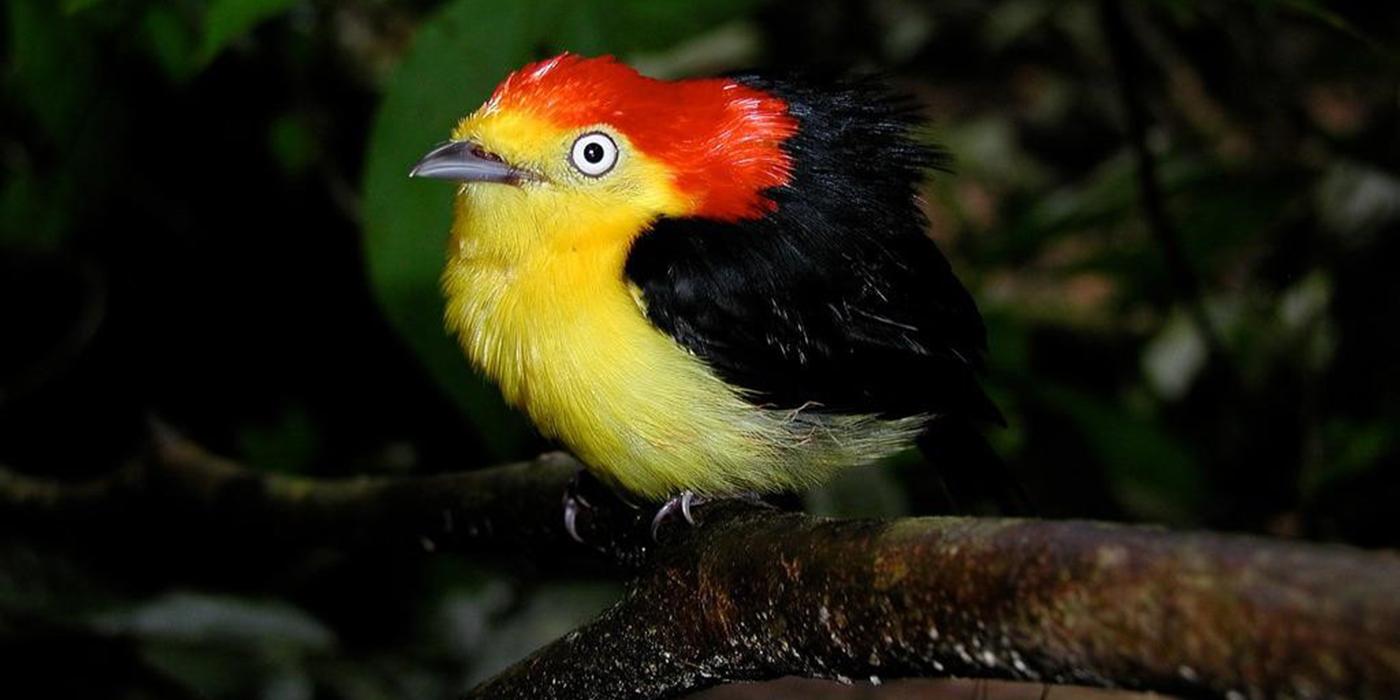Bird Social Networks
This project is no longer active. Please contact us with any inquiries.
Smithsonian Migratory Bird Center scientists work to better understand what underlies cooperation and social networks in wire-tailed manakins. This work uses observation, novel tracking approaches and sampling to understand how hormones shape behavior and the roles individuals play in their social networks.
The wire-tailed manakin is a unique and fascinating bird species that lives in Ecuador's tropical forest. Unlike most other birds that compete for mates, male manakins form long-lasting, cooperative partnerships. They are each other's wingmen, in every sense of the word. These male-male relationships are the foundation of their social networks.
However, understanding how a male's behavior contributes to his popularity within a network—and his likelihood to successfully pass on genes to the next generation—remains largely unresolved. By measuring the ways hormones influence cooperative behavior, scientists can understand how animals optimize behavior in different social environments.
This study is made possible thanks to funding and support from the National Science Foundation.











